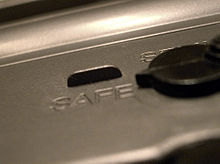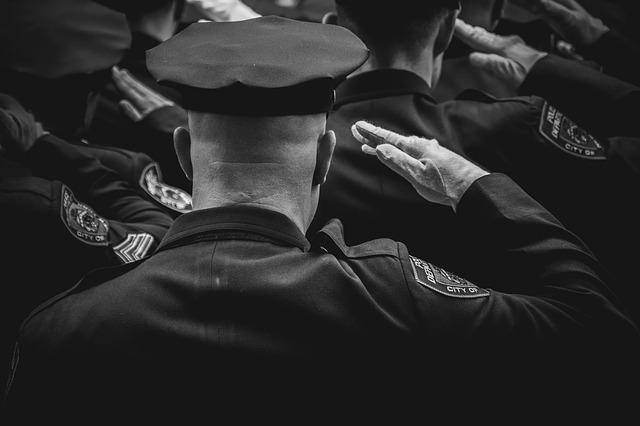
Today sees the opening of the statewide youth hunting season and the expansion of early antlerless only. Minnesota hunting magazine contains the latest news, events, and answers frequently asked questions. The magazine also includes information about youth season details, and the deadline for applying. You can read on to learn more about this year’s youth season, and check if you are qualified. Below are a few important facts about Minnesota youth deer hunting.
Archery license valid only in bucks-only areas
The legal bucks only are allowed to be hunted by youth deer hunters who have a valid archery license. Bucks must be able to hunt on public land. On designated junior deer hunt training dates, from November 5 through November 12, 2020, youth hunters are allowed to hunt with firearms. The hunter's license will be valid for two seasons and a replacement tag will be issued if lost or stolen.
The hunting seasons are not the only ones that apply to youth hunters. They can hunt for buck-only and elk in certain areas. Both of these federal holidays are illegal, but it is legal for hunters to hunt deer using bows in the county they choose. The rules for these hunts are very specific and will vary by county. However, for those planning on hunting a deer with bows in Wisconsin, there are some important things to keep in mind.

CWD sampling mandatory for deer harvested during mn youth deer hunts
CWD sampling is now required for youth deer hunts in Minnesota. For youth deer hunts, hunters will need to provide a deer carcass at a sampling station within 24-hours of harvest. The DNR website provides information about the locations of the sampling stations. Hunter should contact the DNR or visit its website to locate the closest sampling station.
Permit hunters who would like to submit CWD-tested samples to the DNR should bring their deer along to a selfservice sampling station, located between Oslo and Moorhead. Once samples are collected, DNR staff will collect them from the Retropharyngeal lymp nodes. The samples will go to a laboratory for further analysis. Once the results have been received, hunters will be able to check the DNR website to see if their deer have contracted the disease.
Application due date
The Minnesota DNR released a list with dates available for its next youth hunt. This special youth hunt is open to ages 12 and up and is held in a specific area. An adult supervisor is required for youth hunters who are 21 years or older and have completed Minnesota DNR education. Both the youth supervisor and the adult supervisor must fill out the application. They must remain within 50 yards of the youth at any time. Only youth deer tags are valid for hunting antlerless whitetail deer. However, crossbows can be brought by adults 21 and older.
Minnesota residents must apply to get a license. You will need to purchase the license if you're not a resident of Minnesota. Minnesota has three different deer hunting license categories. Resident hunters pay $30 and nonresident hunters pay $165. A youth hunter who is 10 years or less can apply for a license. Non-resident hunters are eligible to purchase a license which is valid for the entire calendar year.

Cost of the license
Minnesota offers three types if deer hunting permits: the nonresident, resident, or bonus antlerless. Children under 12 years old are eligible to receive youth hunting tags for no cost. Adults must pay a nonresident fee of $165 for a deer hunting license. Nonresidents pay $80 and residents only $10 for a youth hunting license. You can also get bonus antlerless tags. They are $12 for residents and $20 for nonresidents.
Log in to the Minnesota Game and Fish site to order a Minnesota youth deer hunting license. Click the "Apply” button in the section titled 'Lottery/Gratis. Enter your personal data, including your age. You must be aged between eleven and twelve years by the end the calendar year. Only antlerless whitetails are eligible for this license.
FAQ
Can I hunt with or without a license?
Yes, you can hunt with no license. But, you're breaking the law.
Fines and jail time could be possible.
Some states allow residents hunting without the need for a license. You can hunt in some states without a permit if you check with your state department for natural resources.
What are the many benefits of hunting?
Many cultures have long practiced hunting. It was used for food, clothing, shelter, tools, medicine, and other purposes. Even today, hunters still hunt for sport but also food and recreation. The meat of hunted animals is typically eaten within minutes after they are killed, while skin, hair, feathers, bones and antlers can be sold as trophies.
Hunting isn’t just about eating, it’s a way that you can live.
People who hunt have strong family ties and friendships because they spend time together. They share stories and fond memories around campfires and at meals.
Hunters enjoy nature and wildlife, which helps them appreciate life on Earth.
When they look after game animals, they are taught responsibility and respect.
Hunters become better citizens because they practice conservation. They are responsible for protecting habitats and species. They understand how much land and water we need to survive.
Hunters are part a larger community. Their families are dependent on them. They help each other. They support local businesses.
Hunters are also able to give back to the community. Many hunters contribute money to charity organizations that aid children, the elderly, veterans, and others.
Hunters can also donate their time to help people in need. For example, they could work with the Humane Society of the Red Cross.
Is hunting dangerous?
Yes, hunting can cause injuries.
There are many ways that you can injure someone else.
Poor shooting techniques can be one of the reasons. You might shoot from the wrong angle, or miss the right part of an animal.
Another danger is being attacked or bitten by another animal.
Hunting accidents happen every year. Many people are injured or killed by their guns every year.
Hunters must ensure that their guns are not loaded until they reach their destination.
When they are out in the woods, they should make sure that their guns don't get loaded.
Always keep your eyes wide open. Pay attention to where you are going and listen out for any sounds.
You must be able to defend yourself against any animal that you approach.
Never chase after prey. Instead, wait patiently and they will come to you.
Do not take shortcuts. These can cause injury or even death.
Be careful around cliffs and other places where you cannot see what's below.
Avoid streams and rivers. These areas could flood without warning.
While hunting, avoid drinking alcohol. You can slow down your reaction time and affect your judgement.
Always keep all safety equipment close by. Always have a flashlight, first aid kit, and flashlight with you.
It is vital to learn how to deal with an emergency. It is important to learn how to give first aid and CPR.
What gun works best for hunting?
A.22 caliber rifle makes the most effective hunting weapon. It is light and easy to transport. It also allows you to shoot accurately at long distances.
When you don't expect a predator to attack, this is the best time to use your firearm.
You don’t want to waste ammunition shooting at trees, because it would do little harm. It is important to aim at your prey with a clear shot.
A.30 caliber rifle can be used if you plan to hunt larger game such as deer and elk. However, it is heavier than a.22 rifle.
For accuracy with a 30-caliber rifle, you will need more practice.
How many deer hunters are there in the U.S.
Over 20 million deer hunters are estimated to live in the United States. This figure includes both professional and recreational hunters.
Statistics
- In less than 20 years, Rhode Island saw a 40% drop in the number of hunting licenses for residents, according to The Valley Breeze. (stacker.com)
- Licenses dropped from a peak of roughly 17 million in the 1980s to 15 million in 2019, according to The Seattle Times. (stacker.com)
- - Percent of residents with paid hunting licenses: 0.7%- (stacker.com)
- - Percent of residents with paid hunting licenses: 0.7%- (stacker.com)
External Links
How To
How to hunt wild ducks
Decoys are the most common method of hunting wild ducks. Decoys can be used to hunt wild ducks. You should place the birds at a distance from your blind in order to view them from far away. Windy conditions can cause birds to flee quickly so it is best not to hunt in them. Some birds might also be scared off by hunters who are nearby.
It is important to know how many wild ducks you wish to hunt. If you don't know what kind of bird you're shooting, then you shouldn't shoot. Be sure to have enough ammunition for as many birds and as many shots as you need.
If you endanger many birds, you will need to clean and prepare your meat before you can eat it. You should cook the meat immediately as it will dry out quickly once it starts to cook. Once the meat is cooked remove all bones and feathers.
Wild ducks can often be found close to water. However, they may also be seen flying through fields and woods. Because they fly low to ground, it makes them easy targets. Try to keep wild duck hunting quiet until you reach a distance that allows you to make a shot. This means staying quiet and still while waiting for a chance to shoot.